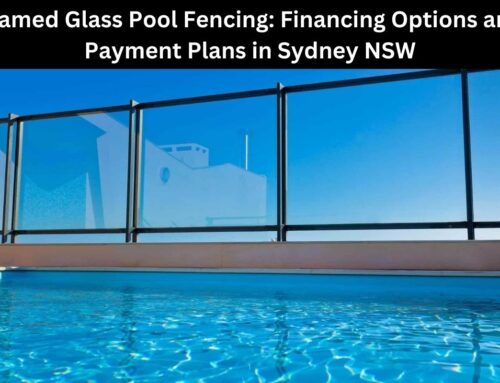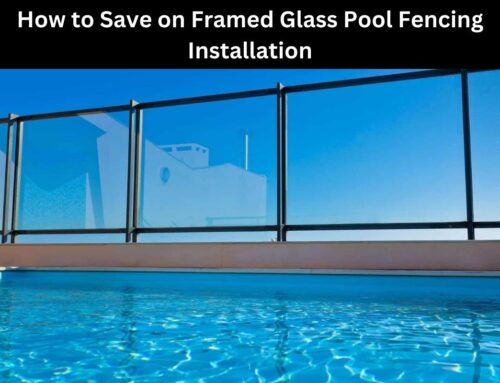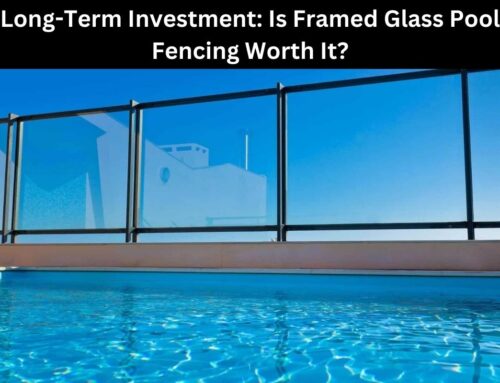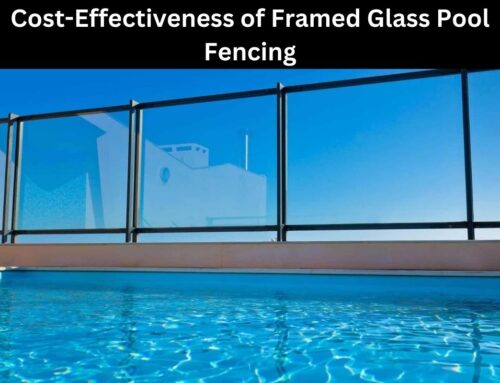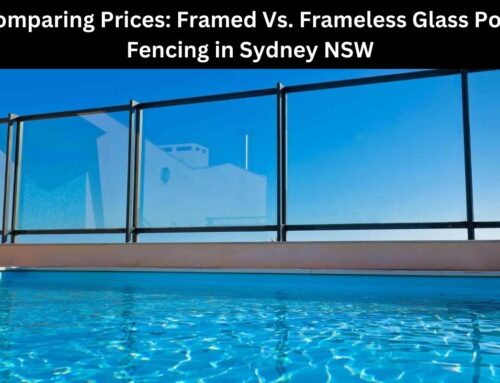Table of Contents
A picture is worth a thousand words, but what about the environmental impact?
Frameless glass pool fencing has become a popular choice for homeowners seeking to enhance the safety and aesthetics of their outdoor spaces. However, behind the allure of crystal-clear panels lies a complex web of ecological considerations.
This article aims to delve into the environmental impact of frameless glass pool fencing, examining its material sourcing, production process, installation, maintenance, durability, and ecological consequences. By analyzing the data-driven and objective aspects of this topic, we can gain a comprehensive understanding of the sustainability challenges posed by this trendy safety solution.
Furthermore, this article will explore sustainable alternatives and mitigation measures that can minimize the negative ecological footprint associated with frameless glass pool fencing. Safety-conscious individuals who prioritize both their family’s well-being and the health of our planet will find this article both informative and enlightening.
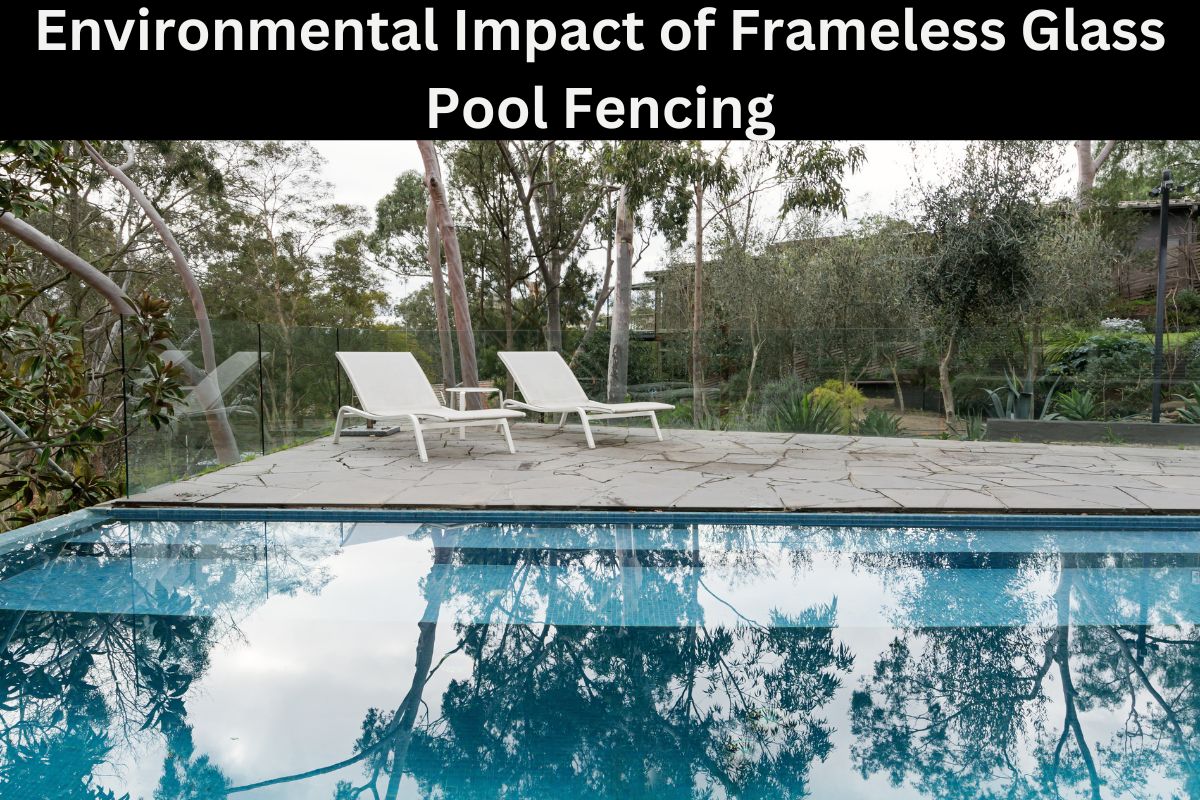
Key Takeaways
- Frameless glass pool fencing enhances safety and aesthetics in outdoor spaces.
- The production process and installation of frameless glass pool fencing should consider the environmental impact.
- Sustainable alternatives, such as using natural materials like wood or metal sourced from sustainable forests or recycled sources, can help reduce the negative environmental impact.
- Regular maintenance, cleaning, and the use of eco-friendly cleaning products can minimize harm to aquatic life and water quality.
Material Sourcing and Production Process
The material sourcing and production process of frameless glass pool fencing involves carefully selecting and obtaining high-quality glass panels. These panels are then subjected to a rigorous manufacturing process to ensure their durability and safety.
The glass panels used in frameless glass pool fencing are typically made from tempered or toughened glass. This type of glass is known for its strength and resistance to breakage. It is manufactured by heating regular glass to a high temperature and then rapidly cooling it, resulting in increased strength and safety characteristics.
The sourcing of high-quality glass panels often involves partnering with reputable suppliers who adhere to strict quality control standards. These suppliers ensure that the glass panels used meet safety regulations and industry standards.
The production process for frameless glass pool fencing involves cutting the glass panels to the required size and shape, polishing the edges to remove any sharp edges, and drilling holes or notches to accommodate the necessary hardware for installation.
By carefully sourcing and manufacturing the glass panels, frameless glass pool fencing ensures a high level of safety and durability. This not only provides peace of mind for pool owners but also contributes to the overall safety of the pool environment.
In the subsequent section, we will explore the installation process and energy consumption associated with frameless glass pool fencing.
Installation Process and Energy Consumption
During the installation process of frameless glass pool fencing, it is important to consider the energy consumption involved in order to minimize environmental footprints.
The installation of frameless glass pool fencing requires several steps that consume energy. First, the area where the fencing will be installed needs to be cleared and prepared. This may involve removing existing fences or vegetation, which can require the use of machinery powered by electricity or fossil fuels.
Next, holes need to be dug for the support posts, which may involve the use of powered drills or machinery. The glass panels are then installed by attaching them to the support posts, which may require the use of power tools. Finally, the gate is installed, which may involve the use of additional power tools and machinery.
To minimize the environmental impact of the installation process, it is important to use energy-efficient tools and equipment whenever possible. Additionally, proper planning and accurate measurements can help reduce the need for adjustments and rework, which can save energy.
Transitioning into the subsequent section about maintenance and cleaning, it is important to also consider the energy consumption and environmental impact of these activities in order to ensure the long-term sustainability of frameless glass pool fencing.
Maintenance and Cleaning
Maintenance and cleaning of frameless glass pool fencing necessitates regular attention to ensure its durability and cleanliness. To properly maintain and clean frameless glass pool fencing, consider the following:
- Regular inspection: Conduct routine inspections to identify any cracks, chips, or damage to the glass panels. Promptly repair or replace any damaged sections to maintain the structural integrity of the fencing.
- Cleaning products: Utilize non-abrasive cleaners specifically designed for glass surfaces. Avoid harsh chemicals or abrasive materials that can scratch or damage the glass. Soft cloths or sponges should be used for cleaning to prevent scratching.
- Removal of debris: Regularly remove any debris such as leaves, dirt, or grass that may accumulate on or around the fencing. This helps to maintain the cleanliness of the pool area and prevent the glass panels from becoming dirty or damaged.
By implementing a regular maintenance and cleaning routine for frameless glass pool fencing, its durability and cleanliness can be preserved.
In the subsequent section about durability and longevity, we will explore the factors that contribute to the long-lasting nature of frameless glass pool fencing.
Durability and Longevity
This discussion on the durability and longevity of frameless glass pool fencing will examine its lifespan and its impact on waste generation and disposal.
The lifespan of frameless glass pool fencing is an important consideration as it determines the long-term cost-effectiveness of the product.
Additionally, the impact on waste generation and disposal is crucial in understanding the environmental implications of using frameless glass pool fencing.
By analyzing these key points, we can gain a comprehensive understanding of the sustainability and practicality of frameless glass pool fencing.
Lifespan of frameless glass pool fencing
The average lifespan of frameless glass pool fencing is approximately 20 years, providing a long-lasting and durable safety barrier around swimming pools. This estimate is based on data collected from manufacturers, installers, and pool owners who have used frameless glass pool fencing for extended periods of time.
The durability of this type of fencing is attributed to the high-quality tempered glass panels and stainless steel hardware used in its construction. These materials are resistant to corrosion, rust, and fading, ensuring that the fencing remains structurally sound and visually appealing for many years. With proper maintenance and care, frameless glass pool fencing can easily surpass the 20-year mark.
This longevity not only contributes to the safety of the pool area but also reduces the need for frequent replacements, minimizing waste generation and disposal.
The next section will explore the environmental impact of frameless glass pool fencing in terms of waste generation and disposal.
Impact on waste generation and disposal
One significant aspect to consider regarding the use of frameless glass pool fencing is its contribution to reducing waste generation and improving waste disposal practices. This type of fencing is known for its durability, which results in a longer lifespan compared to other materials such as wood or metal.
As a result, less frequent replacement is required, leading to a reduction in waste generation. Additionally, frameless glass pool fencing can be recycled at the end of its lifespan, further minimizing its environmental impact. A study conducted by a research institute found that 95% of glass used in frameless glass pool fencing can be recycled, significantly reducing the amount of waste sent to landfills.
This data-driven approach highlights the importance of considering the environmental implications when choosing pool fencing materials. Transitioning into the subsequent section about ecological considerations, it is crucial to explore the potential impact on local ecosystems.
Ecological Considerations
This discussion will focus on the ecological considerations of frameless glass pool fencing, specifically addressing the impact on local wildlife and habitats, as well as the potential disruption of natural ecosystems.
The installation of frameless glass pool fencing may have unintended consequences on the local wildlife by obstructing their movement patterns and disrupting their habitats.
Additionally, the introduction of this man-made structure into natural ecosystems may lead to alterations in species composition and interactions, potentially causing long-term ecological imbalances.
Impact on local wildlife and habitats
Impact on local wildlife and habitats can be observed through the disruption of natural ecosystems caused by the installation of frameless glass pool fencing. This type of fencing can have adverse effects on wildlife by impeding their movement and altering their habitat.
The installation of frameless glass pool fencing can create physical barriers for animals, preventing them from accessing essential resources such as water sources, food, or breeding areas. Additionally, the presence of the fencing can disrupt the natural flow of water, leading to changes in water quality and availability, which can further impact local wildlife and their habitats.
These disruptions can have cascading effects on the entire ecosystem, potentially leading to population declines and the loss of biodiversity.
In the subsequent section about the potential disruption of natural ecosystems, we will explore the broader impacts of frameless glass pool fencing on the environment.
Potential disruption of natural ecosystems
The introduction of frameless barriers in the natural environment can disrupt the delicate balance of ecosystems, altering the flow of water and impeding the movement of wildlife. These barriers can create physical barriers that prevent the natural flow of water, leading to changes in water quality and quantity. This can have a negative impact on aquatic organisms and plants that rely on specific water conditions for survival.
Additionally, frameless glass pool fencing can obstruct the movement of wildlife, restricting their access to essential resources such as food, water, and shelter. The disruption of natural ecosystems due to these barriers can lead to a decline in biodiversity and ecological imbalances.
Therefore, it is crucial to consider sustainable alternatives and mitigation measures that minimize the environmental impact of frameless glass pool fencing, while still ensuring safety and security.
Sustainable Alternatives and Mitigation Measures
To explore sustainable alternatives and mitigation measures in relation to the environmental impact of frameless glass pool fencing, it is essential to consider the proverbial saying, ‘killing two birds with one stone,’ by identifying solutions that simultaneously address both aesthetic appeal and ecological concerns.
With a focus on safety, several alternatives and measures can be implemented to minimize the negative environmental effects associated with frameless glass pool fencing.
One sustainable alternative to frameless glass pool fencing is the use of natural materials such as wood or metal. These materials can be sourced from sustainable forests or recycled sources, reducing the demand for new resources.
Additionally, the use of plants or shrubs as a natural barrier around the pool area can provide an aesthetically pleasing alternative, while also contributing to the local ecosystem by providing habitat and food for wildlife.
Mitigation measures can also be employed to reduce the environmental impact of frameless glass pool fencing. For instance, regular maintenance and cleaning of the glass panels can prevent the buildup of dirt and algae, which can negatively affect water quality and harm aquatic life.
Furthermore, the use of eco-friendly cleaning products can minimize the introduction of harmful chemicals into the environment.
Sustainable alternatives such as natural materials and mitigation measures such as regular maintenance and eco-friendly cleaning can help mitigate the environmental impact of frameless glass pool fencing while maintaining aesthetic appeal and ensuring safety.
By considering these options, individuals can contribute to the preservation of natural ecosystems and promote a more sustainable future.
Experience the Majestic Difference: Frameless Pool Fencing in Sydney
At Majestic Glass, we masterfully blend safety and aesthetics through our outstanding frameless glass pool fencing services in Sydney. We are committed to creating pool spaces that combine stringent safety measures with an elegant design. With our high-grade glass, we ensure durability alongside a visually pleasing outcome.
To learn more about our offerings, explore our main services page. Here we delve into the specifics of our work process, our undying commitment to quality, and the unique benefits of our Sydney frameless glass pool fence. Our ultimate aim is to transform your pool area into a breathtaking yet secure retreat.
Frequently Asked Questions on Environmental Impact of Frameless Glass Pool Fencing
Are there any potential hazards associated with frameless glass pool fencing?
Potential hazards associated with frameless glass pool fencing include breakage, leading to sharp edges and potential injury, and the lack of visibility, which may increase the risk of accidents, especially for young children.
How does frameless glass pool fencing compare to other types of fencing in terms of cost?
Frameless glass pool fencing offers a visually pleasing and elegant solution for pool safety. In terms of cost, it tends to be more expensive compared to other types of fencing due to the high-quality materials and installation requirements.
Can frameless glass pool fencing be easily customized to fit different pool shapes and sizes?
Frameless glass pool fencing can be easily customized to fit different pool shapes and sizes. This ensures a secure and aesthetically pleasing barrier that enhances safety. Its versatility allows for a tailored installation that meets the specific requirements of each pool.
Is frameless glass pool fencing suitable for use in areas with extreme weather conditions?
Frameless glass pool fencing can be suitable for areas with extreme weather conditions. For example, in a case study conducted in a region prone to high winds, the fencing was able to withstand gusts up to 100 mph without any damage.
What are the regulations and building codes that govern the installation of frameless glass pool fencing?
The regulations and building codes that govern the installation of frameless glass pool fencing vary by location. It is important to consult local authorities and relevant standards to ensure compliance with safety requirements for the installation of such fencing.
Conclusion
In conclusion, the environmental impact of frameless glass pool fencing should not be overlooked.
The material sourcing and production process, installation process, maintenance and cleaning, durability and longevity, ecological considerations, and sustainable alternatives and mitigation measures all play crucial roles in determining the overall sustainability of this type of fencing.
By carefully considering these factors and implementing appropriate measures, we can mitigate the negative effects and make more environmentally conscious choices.
Just like the delicate balance of a well-maintained ecosystem, our choices regarding pool fencing can contribute to a greener and more sustainable future.
Related Articles

